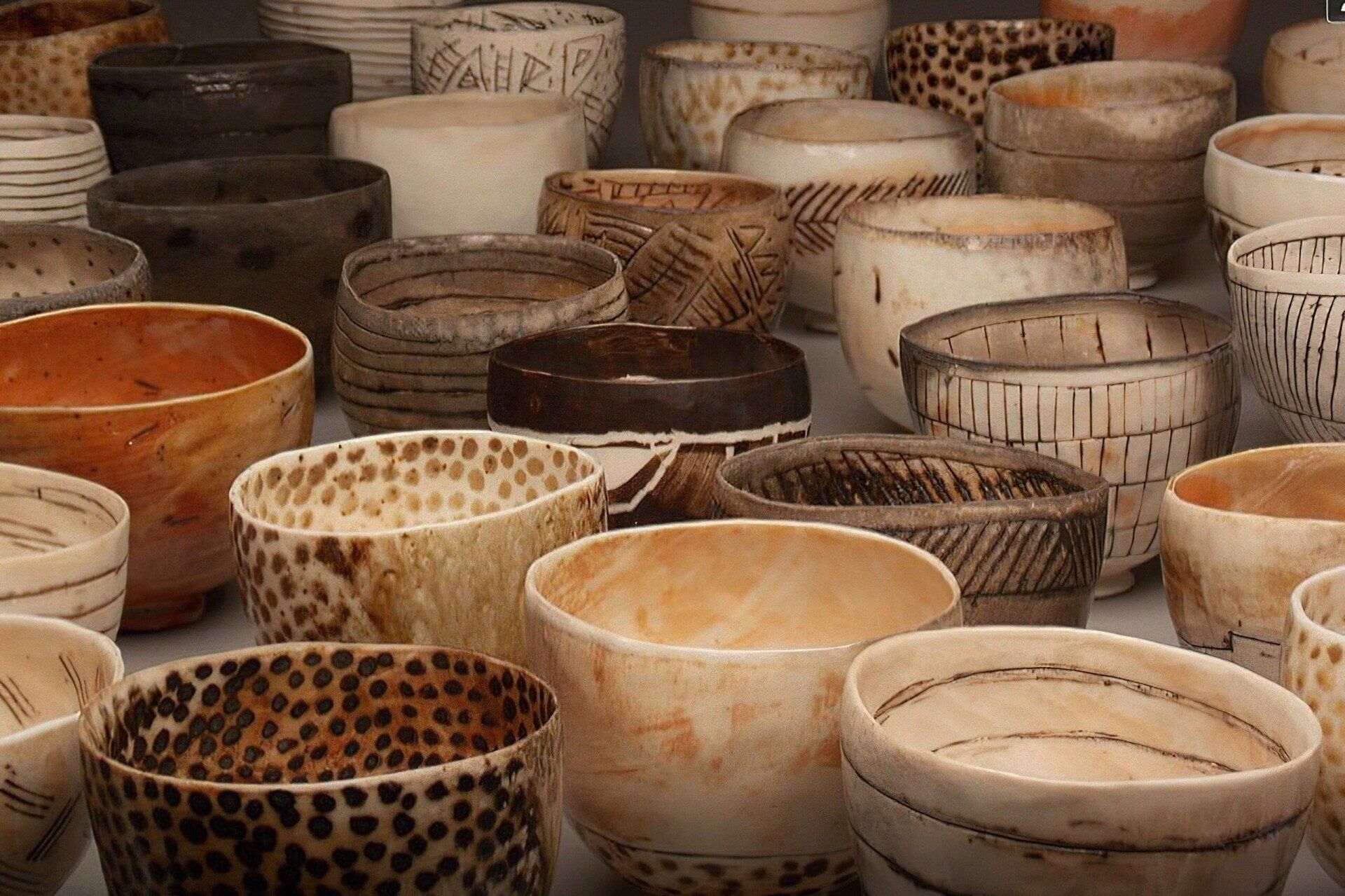Playing with Clay — And
Connecting to Mother Earth
The images are taken from Priscilla Mouritzen’s blog, which has an abundance of information about pinch pots.
Playing with clay connects us to Mother Earth and to our bodies in a very visceral way. This exercise in making pinch pots has appeared in SageWoman Magazine and, originally, in The Divine Feminine Fire. The only material you need is the self-hardening clay that can be found at or ordered online from almost any art supply or craft store. The exercise produces a simple clay bowl that can be used to hold dry objects – not water or food. Don’t be concerned if your first pot is a bit basic and imperfect. This exercise is meant to be more meditation than art project; the joy is in the process more than in the end result!
Pinch pots are some of the oldest archaeological artifacts found; this means human beings have been making pinch pots since they first discovered clay. Making this type of pot is an extremely simple exercise that is meant to connect you with your basic, primal nature. Working with clay is in itself a visceral experience. It comes from the earth. It is earth. As you make your pinch pot, focus on this connection to the earth and allow yourself to sink into the sensual experience of working the clay.
1.Have your materials ready and then use your favorite technique for entering a deeply relaxed, centered, or meditative state.
2. Break off a lump of the self-hardening clay about the size of a tennis ball. (This will make a small bowl.)
3. Begin shaping the lump into a ball with your hands. As you do, begin to focus on your breathing making sure it is deep and regular. When the lump of clay is almost round, place it on a flat surface and use the palm of your hand to roll it into the most perfectly round sphere you can.
4. Be aware of the clay, and how it the simple circular motion of your palm transfers itself into the creation of a nearly perfect sphere. Once you have your sphere, gently push your thumbs into the center to make a hole. Begin pinching up the walls, rotating the clay as you pinch. Stay in a meditative state as you do this; keep your breathing deep and regulated. The more rhythmic and consistent your movements are, the more uniform the thickness of your pot will be.
5. As you rotate and pinch, the shape of your bowl emerges. Keep the thickness of the sides of the pot as even as possible. Occasionally push your thumbs deeper so that any excess clay on the bottom is squeezed up to the sides of the bowl. Become aware of how the rhythm of your breathing and the rhythm of the rotating and pinching fall into a pattern.
6. Whenever you have the beginnings of a nice bowl shape, you can set the clay on a flat surface and push it down a little to form a flat bottom for your bowl. Then begin rotating and pinching again. At some point you may want to set the bowl on the surface again and leave it there while you move your hands to pinch around the bowl.
7. Because of differences in clay and skill, there is no set thickness for the sides of your bowl. The trick is to stop just before the clay gets wobbly and begins to loose its shape. If you go to far, just squish the clay into a ball and begin again – or wrap it in plastic wrap and store it in the refrigerator until you’d like to try again.
8. Once your bowl is finished, leave it to harden. When the consistency of your bowl is about the same as hard leather (usually after about 24 hours), you can “burnish” the bowl – i.e. smooth out the imperfections – by rubbing and smoothing it with the back of a spoon.
9. You can leave your bowl as it is or, once it is completely dry – usually in a few days – you can paint it using acrylics or experiment with different finishes.
This exercise has been adapted with permission from
The Divine Feminine Fire: Creativity and Your Yearning to Express Your Self
(DreamRiver Press). Searching “pinch pots” on the internet will show you many examples of the beautiful bowls and vases that can be made with this technique. Many sites also provide instructions for making other interesting objects, like whistles and little animals. Personally, I thank artist Shelley Yampolsky for introducing me to pinch pots.




